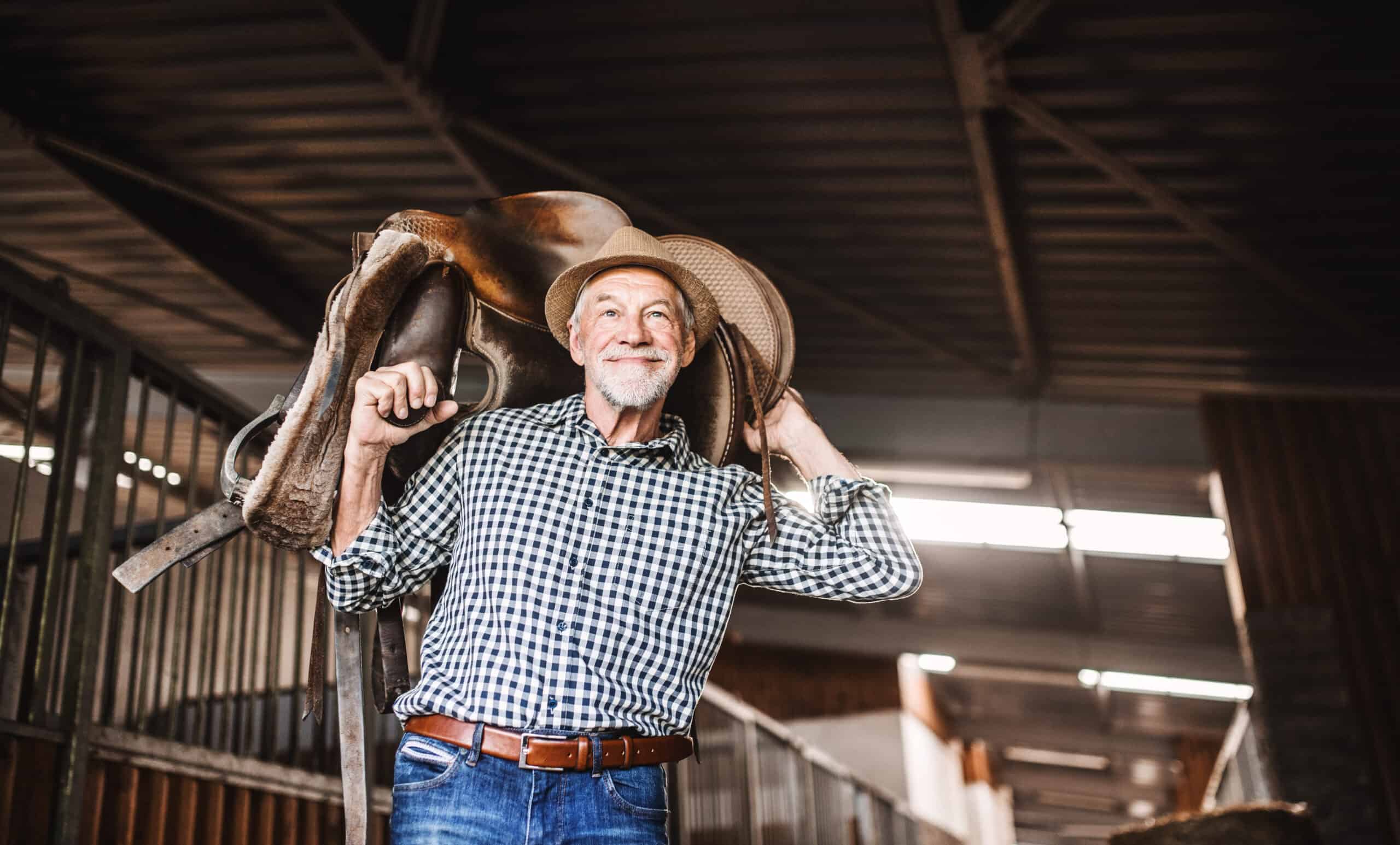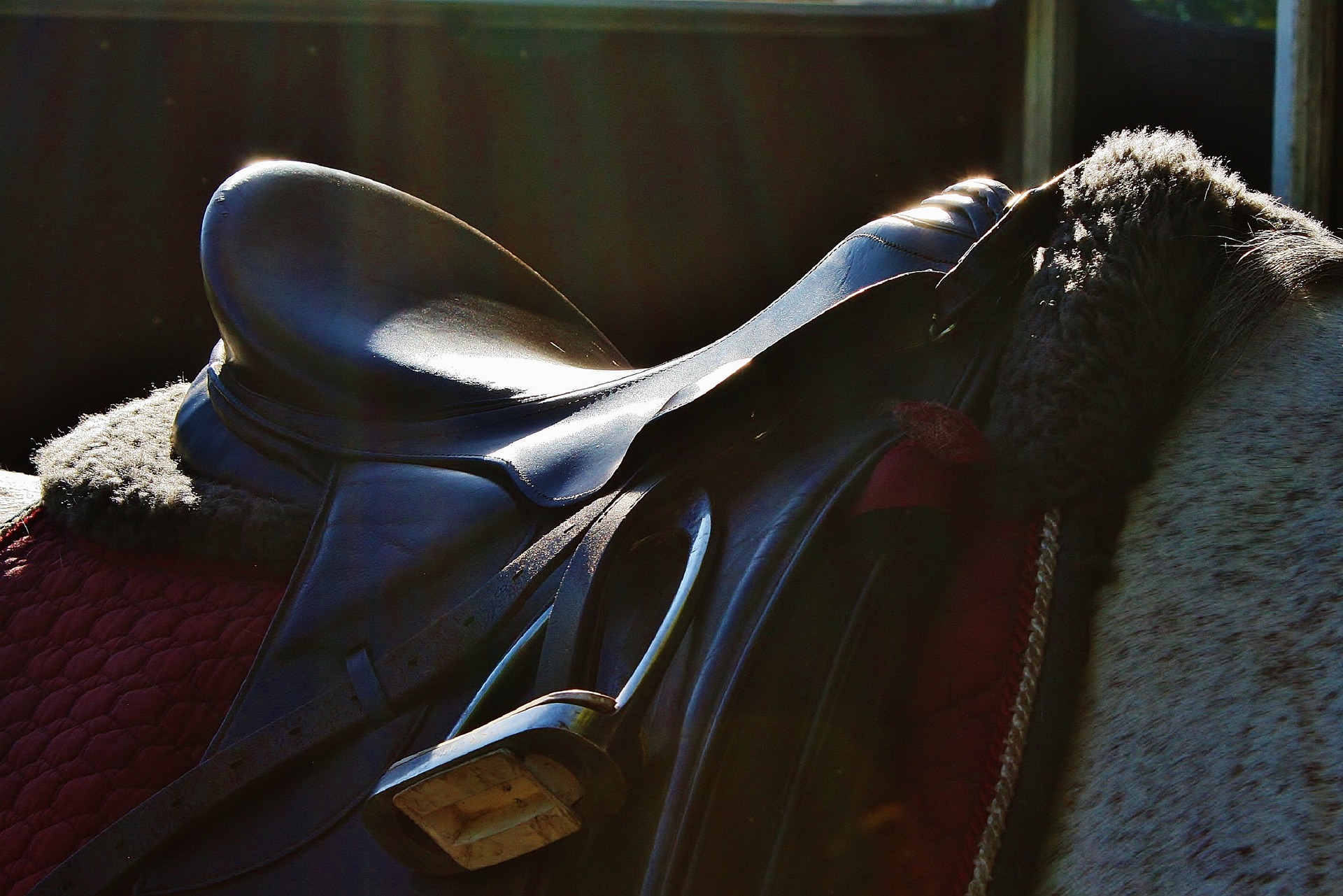Regardless of whether you’re riding with an English saddle or a Western saddle, a saddle is a necessary piece of equipment to protect your horse.
Horse saddle pads can be as cheap as $20 for a very basic model or $50 for a reasonably priced everyday saddle pad. Luxury saddle pads can be as expensive as $500.
Like most other types of tack and equipment, the cost will depend on your exact needs and the saddle pad material itself. When choosing a horse saddle pad and deciding on your budget, it’s important to keep some key considerations in mind.
First, decide on how you intend to use a saddle pad. Think about your daily work or sporting activities that warrant needing a pad. Should you buy multiple versions for different activities? Do you anticipate getting dirty on a regular basis?
For example, if you work on horseback most of the time, then you’ll likely need multiple saddle pads to ensure that you have time to clean and dry them when they’re dirty from a day’s work. Leaving dirt or debris on a saddle pad could hurt your horse by causing friction or rubbing against the skin.
At the same time, you need a quality saddle pad to guarantee that it will hold up from day to day while you’re riding and working. This means balancing multiple priorities while deciding upon the best options for a saddle pad.
Why Horse Saddle Pads Matter
Saddle pads are important for Western saddles and English saddles alike. A horse saddle pad provides a layer of cushion in between the horse and the saddle to protect against saddle sores, friction, and painful pressure points while riding.

Many modern saddle pad designs are moisture wicking and absorb sweat to help keep the saddle clean and the horse cool. Since saddles are rigid and can injure your horse, a saddle pad is essential any time you’re using a horse saddle.
Some people choose to use a half pad as well. Half pads are thicker and can be used to add additional cushion in between a hard saddle and the horse’s back. They can absorb some of the shocks from impact and general riding or jumping.
Half pads are also sometimes used to adjust the fit of a horse saddle. The half pads might have small pockets that allow for additional gel or foam inserts to add cushion and correct the way the horse saddle conforms to the horse.
The Cost Of Different Saddle Pad Materials
The cost of a saddle pad will vary based on material. Wool, felt, synthetic fleece, gel pads, sheepskin, and memory foam are all common materials.
Wool is the traditional choice for a saddle pad. Wool saddle pads can run anywhere from $50–$500 based on the quality and design.
Saddles with gel inserts can fall into a similar price range. Depending on the exact design, adding gel inserts to a saddle pad can add significant cost if they’re customized to the horse’s back to ensure the ideal saddle fit.
Synthetic fleece, memory foam, and other synthetic materials like neoprene are usually the cheapest. These saddle pads tend to fall within the $25–$50 range on the low end.
Sheepskin, which is especially popular in English riding, usually starts at $100 or more for a quality saddle pad. Quilted sheepskin can often be seen in events like dressage, where tack is specially designed for the event.
English Saddle Pads
There are many different styles of saddle pads, and the exact use can have an effect on the price. A basic saddle pad without any special additions or features might only cost $25 on the lower end, but whether or not it’s a good value depends on proper fit and whether it helps protect the horse as intended.

In general, English tack tends to be more expensive than a Western tack, so you can expect English saddle pads to cost a little extra. This is especially true for saddle pads that are specifically designed for certain types of events.
For example, dressage pads can be more expensive because they’re designed for use with a particular type of saddle. Using a dressage saddle pad with another saddle won’t always work and fit your horse properly, so riders might have multiple English saddle pads for different events and activities.
In high levels of competition, many riders use custom saddle pads to ensure that the saddle is able to distribute pressure the right way on the horse’s back while ensuring the horse’s comfort. These saddle pads can be hundreds of dollars based on the exact riding discipline and the tack involved.
Western Saddle Pads
Like English saddle pads, a basic Western saddle pad can be as cheap as $25. The design is different between the two disciplines since Western saddles are heavier and bulkier than English models. This requires a different type of pad to ensure the proper fit.
Early Western saddle pads were simple blankets that could be put under a Western saddle. Modern saddle pads are sometimes made in bright colors to resemble Indigenous blankets, but it’s easy to find a Western saddle pad in nearly any color or pattern.

Choosing a Western saddle pad will depend on the activity or riding event. Long-distance riding requires a comfortable Western saddle and a Western saddle pad that’s designed for extended periods of time in the saddle.
The same amount of cushioning isn’t necessarily needed in barrel racing or roping, so riders have more flexibility about which Western saddle pad to use in those situations. Someone who rides daily or works on horseback is likely to have more than one Western saddle pad.
Final Thoughts
Overall, the cost of a saddle pad can vary significantly depending on your exact needs and the materials used to make the saddle pad. Wool pads are common, but other options may include synthetic fleece, memory foam, or gel pads.
Cheap models are available for $20–$50, while a luxury saddle pad can cost as much as $500.
Some materials are more likely to be associated with certain events or disciplines. Quilted sheepskin, for example, is a staple of English riding and dressage. Blanket-style pads are more popular with Western riding.
A rider’s level of competition will also play a role. After all, an Olympic-level equestrian or a professional jockey will be able to spend more on high-quality equipment and tack compared to an average rider who just needs an average saddle pad for a regular horse saddle.
Frequently Asked Questions (FAQ):
How Long Does A Saddle Pad Last?
Even daily riders can expect a quality saddle pad to last for a year or two. Saddle pads will last even longer with intermittent or occasional use. In general, riders who use a saddle pad on a routine basis should expect the cushioning effect to decrease over time. Wool and fleece will become more compact over time, and gel or foam can begin to lose its bounce. Always inspect your saddle pad before using if you’re concerned that it could be time for a new one.
Can You Use An English Saddle Pad With Western Saddles?
No, you shouldn’t use an English saddle pad with a Western saddle or vice versa. A Western saddle will be much heavier than an English saddle and sit differently on the horse. That’s why a Western saddle pad tends to be much larger and require more cushion than an English saddle pad.



